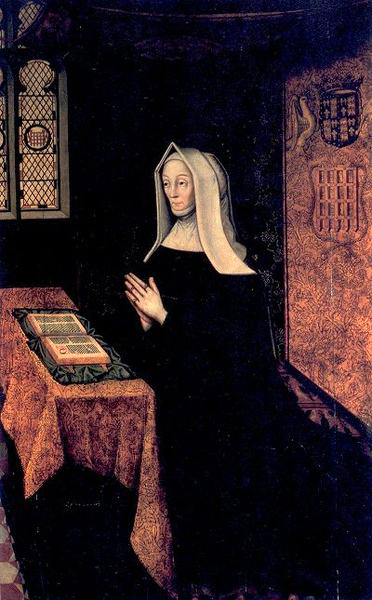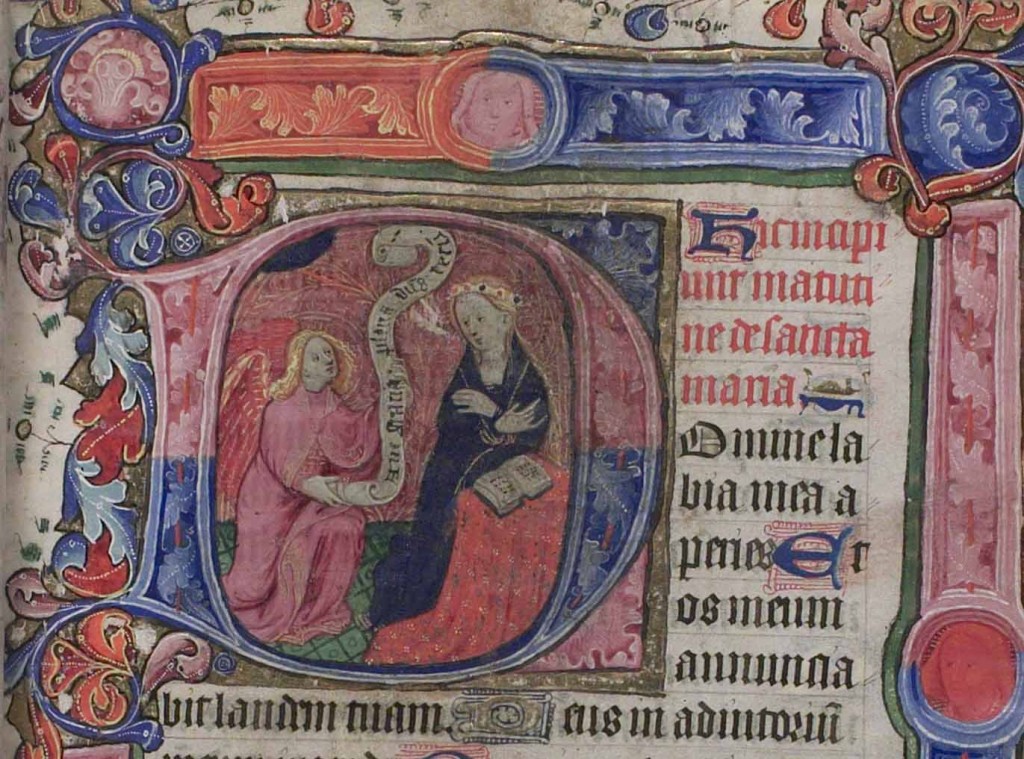Rumour has it this Book of Hours of Richard III accompanied him to Bosworth. Later it was impaired by the mother of Henry VII. Now it has been digitised.
“Lord Jesus Christ, deign to free my, your servant King Richard, from every tribulation, sorrow and trouble in which I am placed…hear me, in the name of all your goodness, for which I give thanks, and for all the gifts granted to me, because you made me from nothing and redeemed me out of your bounteous love and pity from eternal damnation to promising eternal life” (Personal prayer of Richard III)

The last night in the life of Richard III he camped with his army at Bosworth. Rumour had it afterwards that he slept fitfully and had horrid dreams of the fires of hell: “ The King, so it was reported, had seen that night in a terrible dream, a multitude of demons apparently surrounding him, just as he attested in the morning, when he presented a countenance, which was always drawn, but was then even more pale and deathly” (The Crowland Chronicle Continuations, 1459-1486, edited by Nicholas Pronay and John Cox, printed for The Richard III and Yorkist History Trust by Alan Sutton Publishing, 1986, pp 180-181).
Much ink has been spilt over this account: was the king devastated by his conscience and in fear of his mortal sins, was he dreading death or just suffering from a flue? Or was this a fantasy elaborated by the anonymous chronicler of the battle of Bosworth. We shall (in all probability) never know… What we can know is however, that the king had mass celebrated before he went into battle and that he presumably carried a personal prayer-book with him top help him in his daily devotions. At least it is thought that he kept in his tent a very specific Book of Hours, which is now preserved in the Library of Lambert Palace.

The quality of the book in question as well as its later history seems to make this plausible. First of all it is highly unlikely that the king carried one of the more luxurious tomes, he inherited from his brother Edward IV, on a military campaign into the English Countryside. He is more likely to have brought his customary – and more ordinary – daily prayer book. This specific book was made in 1415 and contains prayers, which indicate that it was designed for a priest. Later it was adapted for King Richard III by addition of a long personalised Latin prayer. Obviously it was a prayer book, which he was accustomed to use in his personal devotions. After the battle, the prayer book was presumably gifted to the new Queen Mother, Lady Margaret Beaufort, probably as a trophy. She cannot have used it extensively as she according to Eamon Duffy did not scratch out the name of Richard III systematically; but she did write a small poem (now lost) on the back fly-leaf indicating her ownership. Also her own private Book of Hours is kept in the British Library dedicated to her family history.
The personal prayer of Richard III was for relief from afflictions, temptations, grief, sickness etc. However, especially he petitioned here for protection against his enemies and for his reconciliation with them. This prayer has been studied extensively by Jonathan Hughes, who believes that this prayer offers a unique insight into the “individualistic and idiosyncratic” piety and devotional psychology of not only the king but Late Medieval people in the grip of a protracted civil war. However, his conclusions has been criticised by Eamon Duffy, who has pointed out that the specific Ricardian prayer – apart from some details – may be found in a series of other prayer-collections of that time and even later, where they mimick the general tone of the many psalms in the Psalter used in connection with the office for the Dead (Dirige). A very detailed – and hence more balanced – view has been offered in the edition of the Prayer Book by Anne Sutton and Livia Visser Fuchs. This study explores the manuscript and the Prayer’s text as well as presents a full translation of the so-called “prayer of Richard III”.
As is customary the book is illustrated. The image which forms part of the frontispiece shows the annunciation of the Blessed Virgin Mary. The initial “portrays Mary wearing a blue robe (a colour suggesting purity and traditionally associated with her) kneeling at a desk draped in scarlet. Her hands are held in a posture of prayer and she appears to have a prayer book open before her, all of which can be seen to suggest her piety and openness to the angel’s message. The angel Gabriel is also portrayed kneeling, and looking up towards Mary, a posture which points to the reverence due to her as well as her special vocation to become the mother of Christ. On her head Mary is wearing a wreath of flowers, which can be seen to allude to her traditional title of ‘Queen of Heaven’.” (Quoted from the text presented by the Library of Lambeth Palace)
Digitisation
Recently (2017) it has been digitised and made freely available on the website of Leicester Cathedral. As a bonus, the monograph by Anne F. Sutton and Liva Visser-Fuchs has also been reproduced. As part of the project, it is possible to move back and forth between the two texts and find the exact folios, referenced in the commentary. But it is also possible to read the full book with its detailed studies of comparable Books of Hours, the style of the illuminations, the ownership and reflections on the piety of Richard III.
Digitising the manuscript will enable those with an interest in Richard III’s prayer book to gain full access: from school children and scholars to artists and illustrators; and of course anyone with an interest in ancient manuscripts and liturgical texts and the life of Richard III.
The digitisation of this manuscript was made possible with the financial support of the Heritage Lottery Fund, the Richard III Society and the University of Leicester.
SOURCE:
The Hours of Richard III
Anne F. Sutton (Author), Livia Visser Fuchs (Author)
Sutton Pub Ltd (1990/2000)
The Religious Life of Richard III: Piety and Prayer in the North of England
Jonathan Hughes
Sutton Publishing Ltd 1997

Eamon Duffy
Yale University Press 2011


